Debes estar logueado
-
WróćX
-
Componentes
-
-
Category
-
Semiconductores
- Diodos
- Tiristores
-
Módulos con aislamiento eléctrico
- Módulos con aislamiento eléctrico | VISHAY (IR)
- Módulos con aislamiento eléctrico | INFINEON (EUPEC)
- Módulos con aislamiento eléctrico | Semikron
- Módulos con aislamiento eléctrico | POWEREX
- Módulos con aislamiento eléctrico | IXYS
- Módulos con aislamiento eléctrico | POSEICO
- Módulos con aislamiento eléctrico | ABB
- Módulos con aislamiento eléctrico | TECHSEM
- Przejdź do podkategorii
- Rectificadores de puente
-
Transistores
- Transistores | GeneSiC
- Módulos SiC MOSFET | Mitsubishi
- Módulos SiC MOSFET | STARPOWER
- Módulos ABB SiC MOSFET
- Módulos IGBT | MITSUBISHI
- Módulos de transistores | MITSUBISHI
- Módulos MOSFET | MITSUBISHI
- Módulos de transistores | ABB
- Módulos IGBT | POWEREX
- Módulos IGBT | INFINEON (EUPEC)
- Elementos semiconductores de carburo de silicio (SiC)
- Przejdź do podkategorii
- Controladores de puerta
- Bloques de energía
- Przejdź do podkategorii
- Convertidores de corriente y tensión LEM
-
Componentes pasivos (condensadores, resistencias, fusibles, filtros)
- Resistencias
-
Fusibles
- Fusibles miniatura para circuitos electrónicos, serie ABC y AGC
- Fusibles tubulares de acción rápida
- Eslabones fusibles de retardo de tiempo con características GL / GG y AM
- Eslabones fusibles ultrarrápidos
- Fusibles de acción rápida (estándar británico y estadounidense)
- Fusibles de acción rápida (estándar europeo)
- Fusibles de tracción
- Eslabones fusibles de alto voltaje
- Przejdź do podkategorii
-
Condensadores
- Condensadores de motor
- Condensadores electrolíticos
- Condensadores de película
- Condensadores de potencia
- Condensadores para circuitos de CC
- Condensadores de corrección del factor de potencia
- Condensadores de alto voltaje
- Condensadores de calentamiento por inducción
- Condensadores de almacenamiento de energía y pulsos
- Condensadores de ENLACE CC
- Condensadores para circuitos AC/DC
- Przejdź do podkategorii
- Filtros EMI
- Supercondensadores
- Protección contra sobretensiones
- Filtros para detección de emisiones TEMPEST
- Pararrayos
- Przejdź do podkategorii
-
Relés y contactores
- Teoría de relés y contactores
- Relés semiconductores de CA trifásicos
- Relés semiconductores de CA trifásicos
- Reguladores, controles y accesorios
- Arranques suaves y contactores de inversión
- Relés electromecánicos
- Contactores
- Interruptores giratorios
-
Relés semiconductores de CA monofásicos
- Relés semiconductores CA monofásicos, serie 1 | D2425 | D2450
- Relés semiconductores CA monofásicos, series CWA y CWD
- Relés semiconductores CA monofásicos de las series CMRA y CMRD
- Relés semiconductores de CA monofásicos, serie PS
- Relés semiconductores de CA dobles y cuádruples, serie D24 D, TD24 Q, H12D48 D
- Relés de estado sólido monofásicos, serie gn
- Relés semiconductores de ca monofásicos, serie ckr
- Relés AC monofásicos SERIE ERDA Y ERAA para carril DIN
- Relés AC monofásicos para corriente 150A
- Relés dobles de estado sólido integrados con disipador de calor para carril DIN
- Przejdź do podkategorii
- Relés semiconductores CA monofásicos para PCB
- Relés de interfaz
- Przejdź do podkategorii
- Núcleos y otros componentes inductivos
- Radiadores, varistores, protecciones térmicas
- Aficionados
- Aire Acondicionado, Accesorios para Armarios Eléctricos, Neveras
-
Baterías, cargadores, fuentes de alimentación de búfer e inversores
- Baterías, cargadores - descripción teórica
- Baterías de iones de litio. Baterías personalizadas. Sistema de gestión de batería (BMS)
- Pilas
- Cargadores de baterías y accesorios
- Fuente de alimentación de respaldo de UPS y fuentes de alimentación de búfer
- Convertidores y accesorios para fotovoltaica
- Almacen de energia
- Celdas de combustible
- Baterías de iones de litio
- Przejdź do podkategorii
-
Automaticas
- Elevadores Spiralift
- Piezas para drones Futaba
- Finales de carrera, microinterruptores
- Sensores, transductores
- Pirometría
- Contadores, temporizadores, medidores de panel
- Dispositivos de protección industrial
- Señalización luminosa y sonora
- Cámara termográfica
- Pantallas LED
- Botones e interruptores
- Przejdź do podkategorii
-
Cables, alambres Litz, conductos, conexiones flexibles
- alambres
- Pasamuros y acopladores de cables
- cables Litz
-
Cables para aplicaciones especiales
- Los cables de extensión y compensación
- Cables para termopares
- Los cables de conexión a PT czyjnków
- Multicore cables temp. -60 ° C a + 1400 ° C
- cables de media tensión SILICOUL
- ignición alambres
- Los cables calefactores
- temp núcleo único. -60 ° C a + 450 ° C
- conductores de trenes
- El calentamiento de los cables en el Ex
- Przejdź do podkategorii
- camisas
-
trenzas
- trenzas planas
- trenzas ronda
- trenza muy flexible - plana
- trenza muy flexible - Ronda
- Copper cilíndrico trenzado
- Copper protector de la trenza y cilíndrica
- cintas de conexión flexibles
- Trenzas cilíndrico galvanizado y acero inoxidable
- Aislamiento de PVC trenzas de cobre - Temperatura 85 ° C
- aluminio trenzado plano
- Kit de conexión - trenzas y tubos
- Przejdź do podkategorii
- Accesorios para la tracción
- Terminales de cable
- barras flexibles aisladas
- carril flexible multicapa
- sistemas de gestión de cables
- Przejdź do podkategorii
- Zobacz wszystkie kategorie
-
Semiconductores
-
-
- Suppliers
-
Applications
- Accionamientos de CA y CC (inversores)
- Automatización HVAC
- Automatización industrial
- Automatización industrial
- Calentamiento por inducción
- Componentes para atmósferas potencialmente explosivas (EX)
- Dispositivos de protección industrial
- Energy bank
- Equipos para Armarios de Distribución, Control y Telecomunicaciones
- Fuentes de alimentación (UPS) y sistemas rectificadores
- Impresión
- Máquinas de soldar y máquinas de soldar
- Máquinas herramientas CNC
- Máquinas para secar y procesar madera
- Máquinas para termoformado de plásticos
- Medición y regulación de temperatura
- Medición y regulación de temperatura
- Minería, metalurgia y fundación
- Motores y transformadores
- Tracción de tranvía y ferrocarril
-
Instalación
-
-
Inductores
-
-
Dispositivos de inducción
-
-
Servicio
-
- Contact
- Zobacz wszystkie kategorie
Bobinas de Rogowski – construcción y principio de funcionamiento

Rogowski coils, thanks to their coreless design and wide frequency range, are becoming an increasingly popular alternative to traditional transformers or Hall sensors. In this article, we present the principle of their operation, practical applications, and compare them with other measurement technologies.
What is a Rogowski coil?
A Rogowski coil is a coreless current transducer used for measuring alternating current (AC). It operates based on the principle of electromagnetic induction – it measures the changing magnetic flux generated by the current flow, inducing a voltage proportional to the rate of change of current over time (dI/dt).
Applications of Rogowski coils
Rogowski coils are widely used in:
- power engineering (network monitoring, power quality analysis),
- industrial automation (drive control, motor startup),
- measuring devices and power parameter recorders,
- renewable energy installations (PV, wind turbines),
- e-mobility (charger monitoring, EV infrastructure),
- scientific research and laboratory pulsed current measurements.
Construction of a Rogowski coil
The coil consists of a flexible copper winding spirally wound around a plastic (non-ferromagnetic) core, shaped as a ring or an open loop. It has no ferromagnetic core, eliminating the problems of saturation and hysteresis.
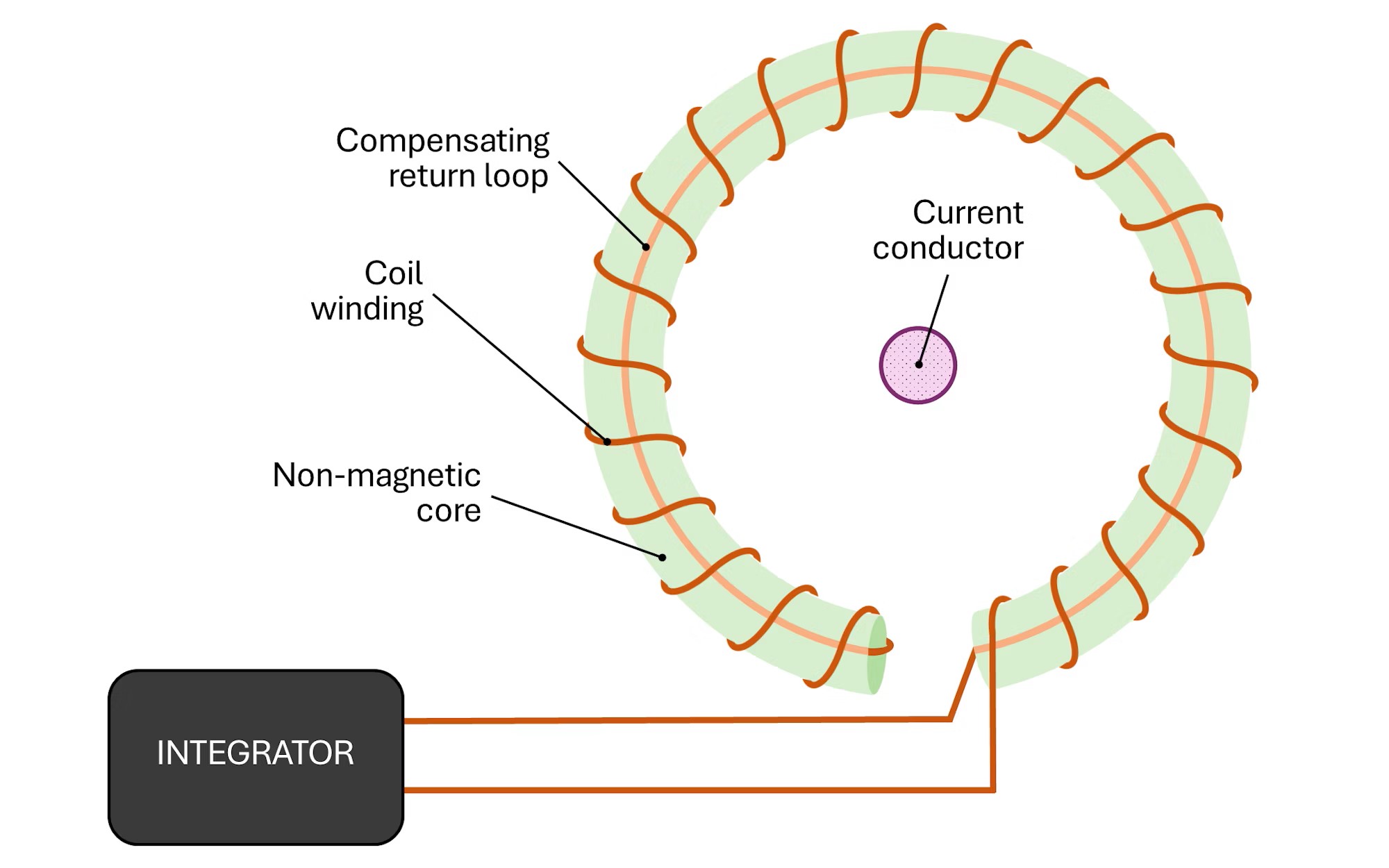
Operating principle of a Rogowski coil
The Rogowski coil works according to Faraday's law of induction: a changing magnetic field, caused by the current flow in the conductor surrounded by the coil, induces a voltage in it. This voltage is proportional to the derivative of the current over time:

*where M is the mutual inductance of the coil relative to the conductor.
To obtain the instantaneous current value, the signal from the coil must be integrated in the measurement path (either analog or digital). Key phenomena used in operation:
- electromagnetic induction (Faraday's law),
- superposition principle (for multi-conductor measurement systems),
- no magnetic coupling with a core (no saturation effect).
Why are PEM coils market leaders?
Rogowski coils from PEM (Power Electronic Measurements Ltd) are considered among the most accurate and stable solutions on the market. The company has been specializing exclusively in Rogowski coil technology for over 30 years, developing a range of innovative solutions:
RCT – industrial Rogowski coils for network monitoring
The RCT series is designed for operation in industrial environments. It offers:
- compliance with industrial standards,
- DIN rail mounting (easy integration with switchgear),
- digital communication via Modbus RTU interface, enabling remote parameter monitoring.
CWT – broadband coils for laboratory and power electronics applications
The CWT series includes precise probes with a wide frequency range – from low to very high:
- available in LF (Low Frequency) and HF (High Frequency) variants,
- bandwidth up to 30 MHz,
- option to choose between external or integrated integrator circuits.
CWT Mini / CWT UltraMini – miniature probes for local measurements
Designed for the most demanding and compact systems, the CWT Mini and UltraMini probes allow for:
- innovative measurement of through-hole components (THT),
- safe and precise measurements of semiconductor circuits (e.g., MOSFET, IGBT, SiC, GaN),
- installation in very limited spaces – e.g., directly on PCBs.
Why choose PEM coils?
PEM solutions stand out from the competition due to their unique design features and quality of workmanship:
- Measurement accuracy up to ±0.1%, achieved through individual calibration of each coil.
- No ferromagnetic core, eliminating issues of magnetic saturation and hysteresis.
- Wide frequency bandwidth – up to 30 MHz, depending on the model.
- Current measurement from a few milliamperes to hundreds of kiloamperes, including pulsed and high-frequency disturbances (HF).
- Flexible mechanical design – coils are lightweight, bendable, often with an openable structure.
- Compliance with international standards, including IEC 61010 and IEC 61869, ensuring safety and reliability.
Comparison with other current measurement methods
In engineering practice, various technologies are used for current measurement, each with its strengths and limitations. The Rogowski coil stands out due to its unique design and characteristics. Here's how it compares to other solutions:
Rogowski Coil
This is a coreless current transducer ideal for measuring alternating and pulsed currents. Its main advantages include:
- No saturation (because it does not contain a ferromagnetic core),
- Very wide frequency range, even up to tens of megahertz,
- Low weight and flexibility — can be installed even in hard-to-reach places,
- Safe, non-contact measurement (galvanic isolation).
Main limitation: it does not allow for direct measurement of the DC component, and the resulting voltage signal requires integration (analog or digital), which may increase the complexity of the measurement system.
Current Transformer (CT)
This traditional solution is primarily used in power engineering and AC current measurement systems. Main advantages include:
- Simple design and reliability,
- Good accuracy at power line frequencies (50/60 Hz),
- Low cost and wide availability.
Limitations include core saturation at high currents, limited frequency range (typically a few hundred Hz to a few kHz), and larger size and weight.
Shunt (measuring resistor)
A shunt is a precision resistor where the voltage drop is used to calculate the current value. Its advantages include:
- Measurement of both DC and AC,
- Very good accuracy at low currents,
- Direct integration with measurement electronics.
Its drawbacks are that the shunt must be inserted into the current circuit, which means no galvanic isolation, risk of thermal losses, and potential overheating at high currents.
Hall Effect Sensor
Hall sensors use the Hall effect to measure the magnetic field generated by the current, enabling measurement of both DC and AC currents. Additional advantages include:
- Full galvanic isolation,
- Compact form factor,
- Easy integration with digital systems.
Main disadvantages include lower accuracy compared to shunts or Rogowski coils, temperature sensitivity, and limitations in high-frequency signal measurement.
Conclusion
The Rogowski coil is best suited where the following are required:
- Measurement of high currents (pulsed or alternating),
- Wide measurement bandwidth,
- Lightweight, flexible, and non-contact installation,
- No issues with saturation or hysteresis.
However, for DC current measurement, high accuracy at low ranges, or simplicity of the system, other technologies may be more appropriate — each has its place in specific applications.
Rogowski coils are current transducers that, thanks to their coreless design, wide bandwidth, and high mechanical flexibility, are ideal for demanding measurement applications. Their ability to accurately reflect rapidly changing currents, immunity to saturation, and resistance to electromagnetic interference make them an ideal choice for power electronics, industrial automation, scientific research, renewable energy systems, and electromobility.
Although not a universal solution (e.g., they do not directly measure DC current), in many scenarios they outperform traditional current transformers, shunts, or Hall sensors – especially where dynamics, safety, and ease of installation matter most.
The choice of the right current measurement technology should always consider the characteristics of the measured signals and the operating environment — and the Rogowski coil may just be the missing link in a modern measurement system.
Productos relacionados
Publicaciones relacionadas
 Now available – DC/DC converters from PREMIUM
Now available – DC/DC converters from PREMIUM
 New release in DACPOL lighting for lathes – Kira covers
New release in DACPOL lighting for lathes – Kira covers

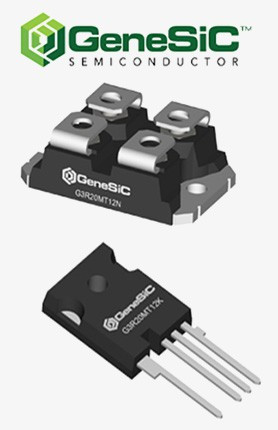
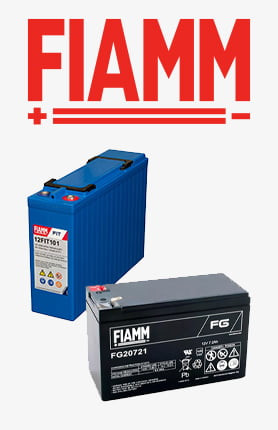
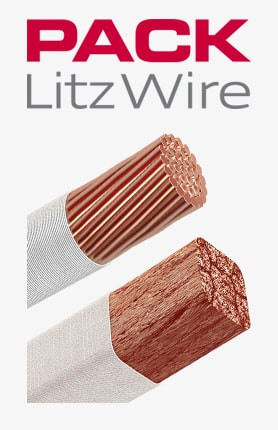
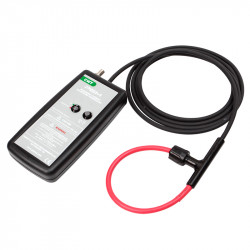
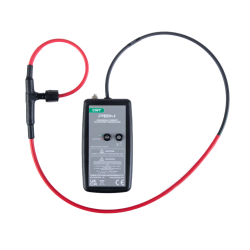
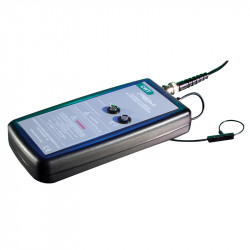
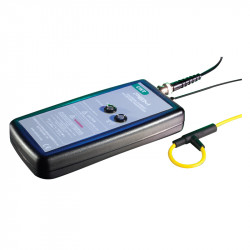
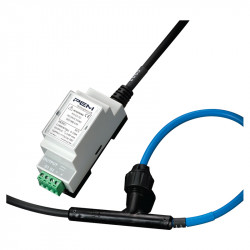
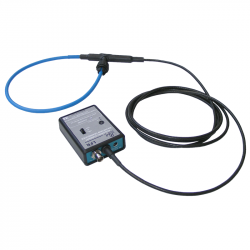
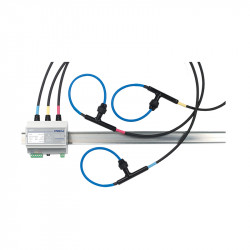
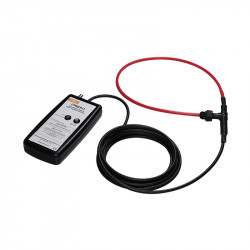
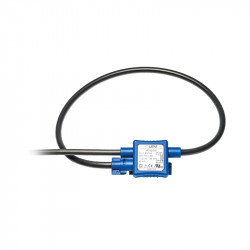
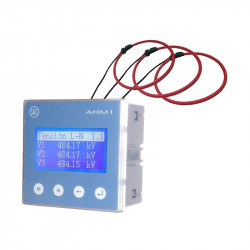

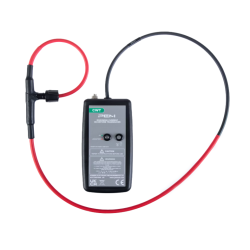
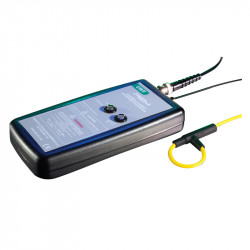


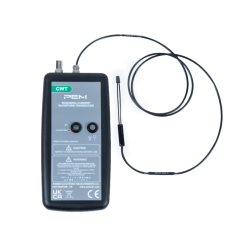
Deja un comentario